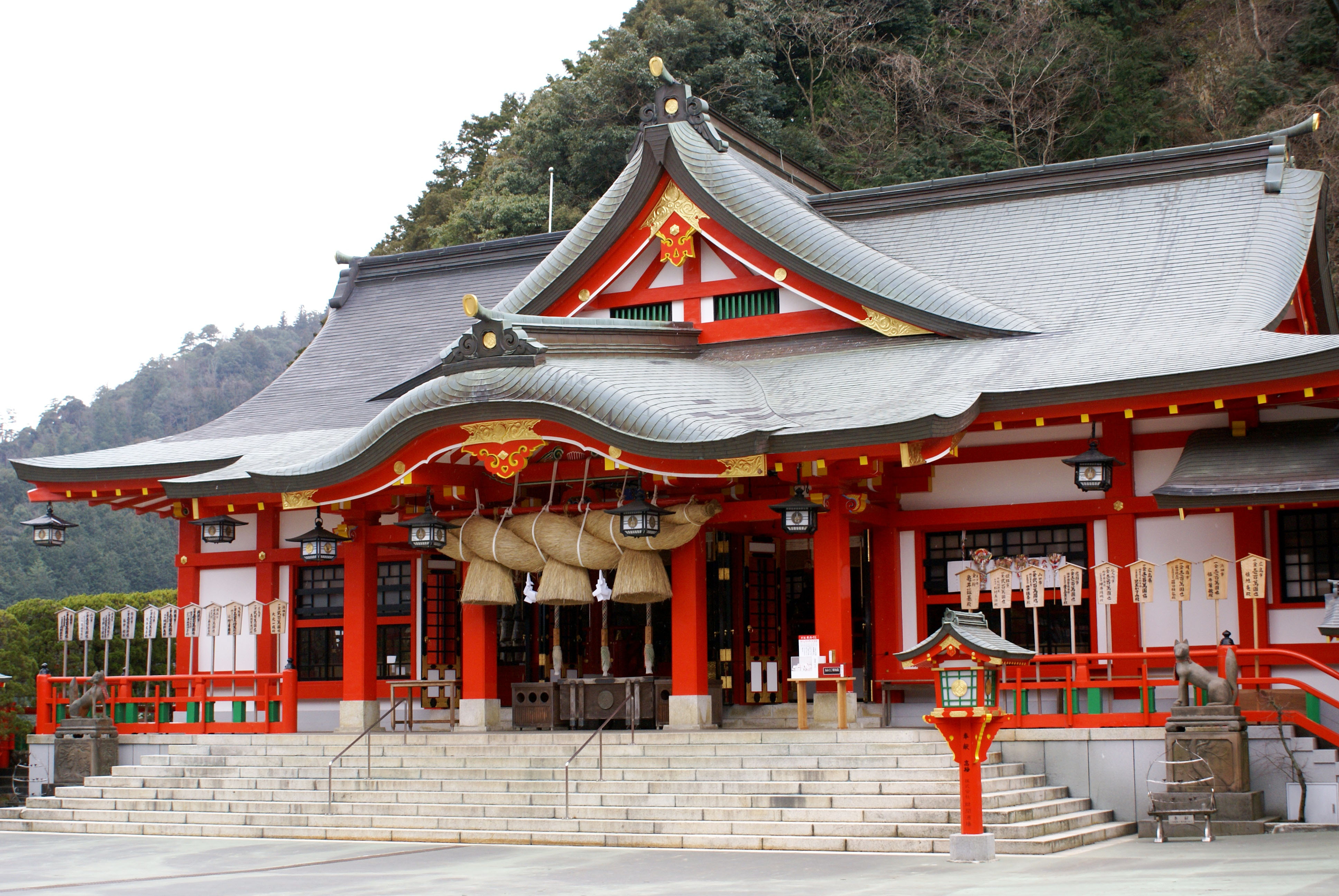The first official gate to the Taikodani Inari Shrine sits at the turn-off to tiny Tsuwano from the circuitous mountain highway that links Yamaguchi and Shimane prefectures. The shrine's main hall, however, sits on another peak halfway across town, a good five-minute drive away. I let my car idle at the traffic lights near the valley floor, conferring with my travel companion, Elaine, as to our next move. While the town to our right begs us to walk its lantern-lined streets, the threatening clouds above — a complete surprise in the forecast — encourage us to make the final ascent up to the main parking area of Taikodani.
I'd imagined that one of Japan's five most important Inari shrines would have more than just us as its visitors, since it annually attracts around 1 million people. Today, however, the grounds are completely devoid of worshippers. The silence is punctuated only by the snapping of flags as the standards lining the shrine's perimeter dance crazily in the strong wind. Trying to ignore the scattering of snowflakes swirling through the air, I approach the only other beings in the complex — a pair of miko-san (shrine maidens) ensconced in a vestibule that doubles as a gift shop. They smile at my request for more information and happily dig up a photocopied English pamphlet.
My 4-year-old daughter darts around counting statues of foxes — the messengers of the goddess Inari — while I learn that in 1773, the local lord summoned the deities from Fushimi Inari Taisha in Kyoto to come reside in Tsuwano. The shrine became the personal prayer locale of the castle residents and even witnessed the 1924 visit of a princess of the Imperial family.



